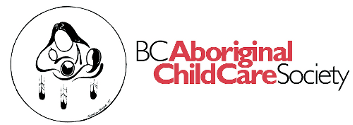A process for creating the Aboriginal children's health and well-being measure (ACHWM) Nancy L. Young, Mary Jo Wabano, Tricia A. Burke, Stephen D. Ritchie, Debbie Mishibinijima, Rita G. Corbiere [electronic resource] /
Material type: ArticlePublication details: 2014Description: 1 online resource (p. 136–141) : digital, PDF fileSubject(s): Public health -- Canada | Children -- Health aspects | Mental health and well-beingOnline resources: Full text
In:
Canadian Journal of Public Health Public Health Vol. 104, no. 2 (2013), p. 136-141Abstract: OBJECTIVES: The purpose of this study was to identify concepts of health and well-being important to Aboriginal children and youth. These concepts were necessary for the development of a culturally appropriate measure of health.
METHODS: We completed 4 community consultation sessions, 4 advisory committee meetings, and 6 full-day focus groups within the Wikwemikong Unceded Indian Reserve. The focus groups engaged Aboriginal children and youth via relevant cultural teachings, a photography exercise combined with a community bicycling tour, and detailed discussions of health and well-being using photovoice. The process was guided by a conceptual model: the Medicine Wheel. The participants placed their photos on a wall mural and identified their most important concepts. These concepts were synthesized through expert consensus into items and reviewed by the broader community.
RESULTS: The participants ranged in age from 8.2 to 17.7 years (mean age=12.3). Through innovative methods, children and youth identified 206 concepts representing the 4 quadrants of the Medicine Wheel: emotional, spiritual, physical and mental. These concepts were refocused, in collaboration with the community, to create a new 60-item measure of health and well-being that was primarily positive in focus.
CONCLUSION: This study demonstrates the success of implementing a unique process of photovoice in combination with bicycling and informed by an Aboriginal framework. The results confirm the distinct conceptualization of health and well-being in this population and underscore the necessity for a culturally appropriate measure. This study also produced a first draft of the Aboriginal Children’s Health and Well-being Measure (ACHWM).
ArticlePublication details: 2014Description: 1 online resource (p. 136–141) : digital, PDF fileSubject(s): Public health -- Canada | Children -- Health aspects | Mental health and well-beingOnline resources: Full text
In:
Canadian Journal of Public Health Public Health Vol. 104, no. 2 (2013), p. 136-141Abstract: OBJECTIVES: The purpose of this study was to identify concepts of health and well-being important to Aboriginal children and youth. These concepts were necessary for the development of a culturally appropriate measure of health.
METHODS: We completed 4 community consultation sessions, 4 advisory committee meetings, and 6 full-day focus groups within the Wikwemikong Unceded Indian Reserve. The focus groups engaged Aboriginal children and youth via relevant cultural teachings, a photography exercise combined with a community bicycling tour, and detailed discussions of health and well-being using photovoice. The process was guided by a conceptual model: the Medicine Wheel. The participants placed their photos on a wall mural and identified their most important concepts. These concepts were synthesized through expert consensus into items and reviewed by the broader community.
RESULTS: The participants ranged in age from 8.2 to 17.7 years (mean age=12.3). Through innovative methods, children and youth identified 206 concepts representing the 4 quadrants of the Medicine Wheel: emotional, spiritual, physical and mental. These concepts were refocused, in collaboration with the community, to create a new 60-item measure of health and well-being that was primarily positive in focus.
CONCLUSION: This study demonstrates the success of implementing a unique process of photovoice in combination with bicycling and informed by an Aboriginal framework. The results confirm the distinct conceptualization of health and well-being in this population and underscore the necessity for a culturally appropriate measure. This study also produced a first draft of the Aboriginal Children’s Health and Well-being Measure (ACHWM).
OBJECTIVES: The purpose of this study was to identify concepts of health and well-being important to Aboriginal children and youth. These concepts were necessary for the development of a culturally appropriate measure of health.
METHODS: We completed 4 community consultation sessions, 4 advisory committee meetings, and 6 full-day focus groups within the Wikwemikong Unceded Indian Reserve. The focus groups engaged Aboriginal children and youth via relevant cultural teachings, a photography exercise combined with a community bicycling tour, and detailed discussions of health and well-being using photovoice. The process was guided by a conceptual model: the Medicine Wheel. The participants placed their photos on a wall mural and identified their most important concepts. These concepts were synthesized through expert consensus into items and reviewed by the broader community.
RESULTS: The participants ranged in age from 8.2 to 17.7 years (mean age=12.3). Through innovative methods, children and youth identified 206 concepts representing the 4 quadrants of the Medicine Wheel: emotional, spiritual, physical and mental. These concepts were refocused, in collaboration with the community, to create a new 60-item measure of health and well-being that was primarily positive in focus.
CONCLUSION: This study demonstrates the success of implementing a unique process of photovoice in combination with bicycling and informed by an Aboriginal framework. The results confirm the distinct conceptualization of health and well-being in this population and underscore the necessity for a culturally appropriate measure. This study also produced a first draft of the Aboriginal Children’s Health and Well-being Measure (ACHWM).

There are no comments on this title.